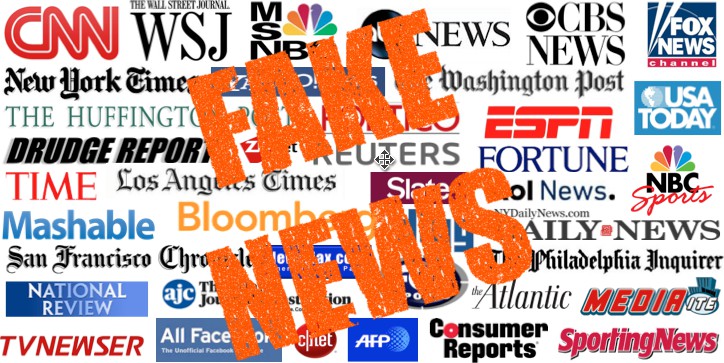Fake News Is Real
BREAKING NEWS – TRUMP AND RUSSIA COLLUSION: Recent investigations into Russia-Trump collusion have come up empty-handed; however, the most recent search discovered a series of emails between Donald Trump Jr. and Russian Defense Minister Sergey Shoygu. The emails have not been released yet, but it seems that Trump Jr. and Shoygu were discussing several topics, including the 2016 election when President Trump was elected.
Actually, that didn’t happen. House Intelligence Committee Republicans have found “no evidence of collusion,” between President Trump and Russia, according to the New York Times. So, why does it seem familiar? Why does it feel as if we’ve been exposed to dozens of articles whose lies are logical, and even believable?
It’s because we’ve seen it all before. Anyone, anywhere (even a student finishing his PhD in London, who needed some money, or, perhaps obviously, Russian internet trolls) can go online, take the breaking news, and skew it into a far-right or far-left mutation that unfairly highlights or ignores pieces of the whole story.
Although it has quickly become a joke, the November, 2017 “Pizzagate conspiracy,” where Edgar Maddison Welch entered a Washington, DC pizzeria armed with two guns and a knife, believing that the building was the site of Hillary Clinton’s satanic rituals involving the sexual abuse of children (yes, really), is a prime example of the consequences of media lies. The claim that Hillary Clinton was a pedophile started in a Facebook post, spread to Twitter, and then went viral with the help of far-right platforms like Breitbart and Infowars.
The original Facebook post appeared soon after then-candidate Clinton’s email server scandal went viral, and from there—aided by social media platforms such as Facebook and Twitter—it eventually reached Welch, a father of two, who, disgusted by what he saw as truth, decided to take matters into his own hands.
Although no one was harmed, Welch’s subsequent arrest shed an uncomfortable light on the saturation of fake news into otherwise-innocent news.
It may have seemed obvious to many readers that the Pizzagate conspiracy was completely false, but with software allowing face-switching, the struggle against fake news is becoming even more daunting.
Below, a video from the University of Washington takes excerpts from a speech by Barack Obama. The recreation uses the same audio, but completely remakes his face with CGI technology.
That, coupled with the rapid development of machines that can fake and recreate voices, could be used to manipulate readers into taking actions similar to those leading to Welch’s arrest. What would happen if someone, prepared to use a weapon, believed those stories? How many innocents could be harmed, or even killed?
In a society where lying is becoming ever-easier, people need to protect themselves, question even the most trusted sources, and learn how to decipher fact from fiction. “[Fake news] is pretty prevalent,” Mrs. Steinke, English teacher and the former journalism teacher at Air Academy, said. “You gotta make sure you fact-check yours sources carefully. Fact-check rather than not.” Now, though, that’s becoming harder than ever.

Suh dudes! I'm Rosalynne Jones (but I go by Rose) and I'm the Jetstream's Managing Editor. I've been on the Journal for two and a half years! I'm a senior...













